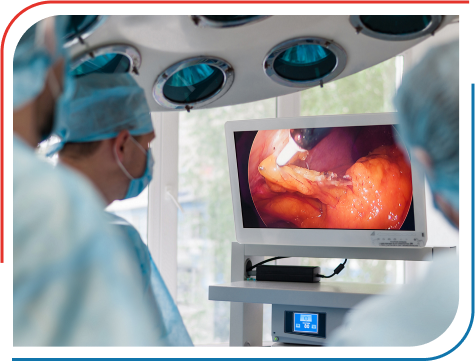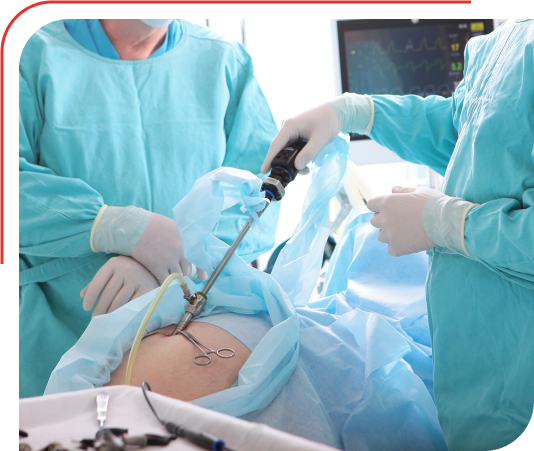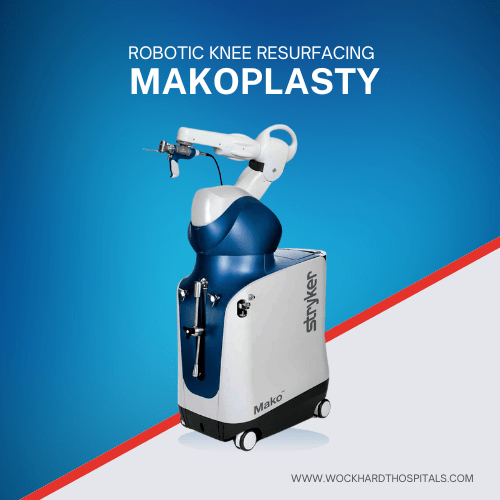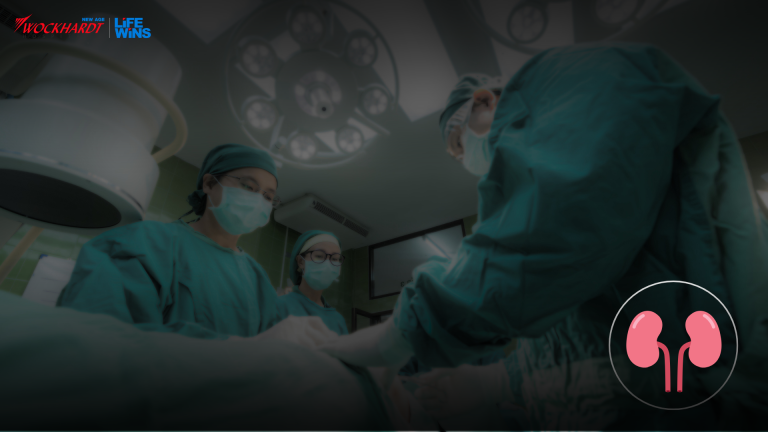Home » Speciality » Laparoscopic Surgery
LAPAROSCOPIC SURGERY, TREATMENT &
PROCEDURE IN INDIA

Why choose Wockhardt Hospitals
for Laparoscopic Surgery
The competent doctors at Wockhardt Hospitals are medical specialists in minimally invasive and laparoscopic surgery. Our surgeons, who perform conventional laparoscopic operations, have been at the forefront of using innovative technology to deliver comfortable, painless, and precise diagnosis and treatment. A comprehensive approach is used by our surgical teams that is backed by state-of-the-art infrastructure and proficiency in the newest medical advancements in the field. We successfully treat thousands of patients each year, and they can select from the best treatment alternatives thanks to the team’s expertise and cutting-edge equipment. We have made significant investments in our infrastructure, from operating rooms to diagnostic tools, to provide you with the best treatment possible.
Wockhardt Hospitals is amongst the best hospitals for laparoscopic surgery in India, taking pleasure in carrying out routine tasks around the clock, seven days a week. This is made possible by committed & compassionate staff members at the hospital who go above and beyond their duties to deliver excellent healthcare services.
Renowned Laparoscopic Surgeons
at Wockhardt Hospitals
- Mumbai Central
- Mira Road
- Nagpur
- Rajkot
What is Laparoscopic Surgery?
Why Might I Need
Laparoscopic Surgery?
The abdomen and its organs can be examined by abdominal laparoscopy to look for the following:
- Appendicitis
- Gallbladder Stones
- Hernia
- Tumors and other growths
- Bleeding inside the belly
- Injuries
- Infections
- Experiencing unexplained abdominal pain
- Blockages
- Other conditions
Nowadays, laparoscopic surgery is a viable option for many routine procedures. A laparoscopy is frequently performed when a physical examination, X-ray, or CT scan provides unclear results. Your eligibility for a laparoscopic operation will depend on your condition’s complexity. To treat some complex illnesses, open surgery could be necessary. Yet, due to its advantages in terms of cost savings and better patient outcomes, laparoscopic surgery is increasingly being used as the standard procedure for various routine surgeries.
How Do I Get Ready for a
Laparoscopic Procedure?
You’ll need to be ready for this in a few different ways because general anesthesia is generally used for laparoscopic procedures. Before surgery, you should fast for roughly eight hours. You should also arrange for someone to drive you home following the surgery. Even while you’ll probably be allowed to return home that day, the anesthetic may have left you feeling drowsy. Further detailed instructions about your medications may be provided by your doctor.
During Laparoscopic Procedure
Around your belly button or pelvic bone, a little incision marks the start of the procedure. Pumping carbon dioxide gas into your abdomen or pelvic cavity is done through this first incision. Trocars, small surgical tubes, are ports for surgical tools in laparoscopic surgery. To fill your abdominal or pelvic cavity with gas, the surgeon will first enter the first trocar. This helps to separate your abdominal wall from your organs and makes it simpler to see your organs on the video display.
After inflating the cavity, the surgeon will remove the gas tube and insert the laparoscope via the trocar. The video display will receive real-time video footage from the surgery site through the laparoscope. The remaining surgical tools will be positioned by this. Depending on the operation, they could create one or more keyhole incisions and insert trocars there. For some circumstances, the tube may need to stay in your body to continue draining fluids for a while after the procedure. After the procedure, everything else will be stitched up. Before the wounds are closed, the gas will be released from your body. Before removing your breathing tube and IV, your surgical team will check that your vital signs are stable.
After Laparoscopic Procedure
Your vital signs will be watched until you wake up while you are transferred to a postoperative recovery room. You can experience drowsiness and disorientation after laparoscopic treatment as you come to grips with the anesthetic after-effects. Some patients may experience nausea or vomiting. You could now require an alternative type of painkiller. Gas pain from leftover carbon dioxide in the body is a typical adverse effect of laparoscopic surgery. You could get shoulder pain which is typical and will pass on its own in a day or so.

Depending on the particulars of your procedure and how your body heals, you might be able to return home the same day, or you might need to stay overnight. When you return home, you will get instructions from your medical team on how to take care of yourself. Included in this are instructions for eating, particularly if you underwent stomach surgery, as well as wound and drain care, if applicable. To monitor your recovery and, if necessary, have your fluid drain removed, you will also make a follow-up appointment before you go.
Types of
Laparoscopic Surgery
With laparoscopic technology, a variety of procedures can be carried out. Laparoscopic treatment is advised for several procedures, including:
- Laparoscopic appendix removal - There are 3 tiny incisions needed for a laparoscopic appendectomy (0.25-0.5 inches). By observing the visuals on a monitor, the surgeon performs surgery.
- Laparoscopic cholecystectomy - This operation is used to remove the gallbladder. Instead of a huge incision that extends the healing process, it necessitates tiny incisions.
- Minimally Invasive spine surgery - A minimally invasive method can address conditions like bone spurs, degenerative disc disease, and herniated discs. Instead of a huge incision, it needs little puncture holes.
- Laparoscopic hernia repair - A laparoscope is placed through the belly button to observe the internal organs. The abdominal wall weakness is covered by the surgeon using mesh.
What are the Benefits of Laparoscopic Surgery?
- Less damage to the abdominal wall.
- Reduced bleeding.
- Lower risk of infection from wounds.
- Shorter hospital stay.
- Quicker rehabilitation and resumption of activity.
- Less pain during wound healing.
- Requires fewer painkillers.
- Significantly smaller scars from minor incisions.
Risk of Laparoscopic Operation
Laparoscopy is a routine operation, and severe consequences are very rare in the procedure. According to statistics, 1-2 cases of every 100 involving laparoscopy will have a minor problem. They incorporate:
- infection
- slight bruising and bleeding at the site of the incision
- feeling sick and vomiting
According to estimates, 1 in 1,000 instances involving laparoscopies result in serious consequences. Among them are:
- Injury to an organ, such as your intestines or bladder
- Problems caused by the use of carbon dioxide during the operation
- Severe allergic response to general anesthesia
- Excessive Bleeding
- Sepsis





























